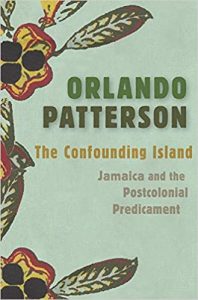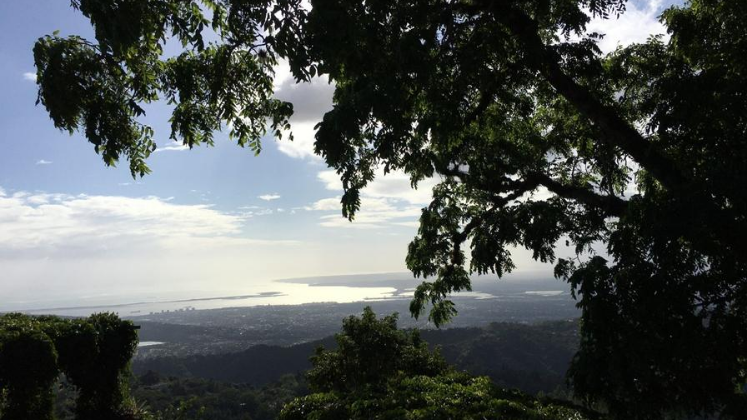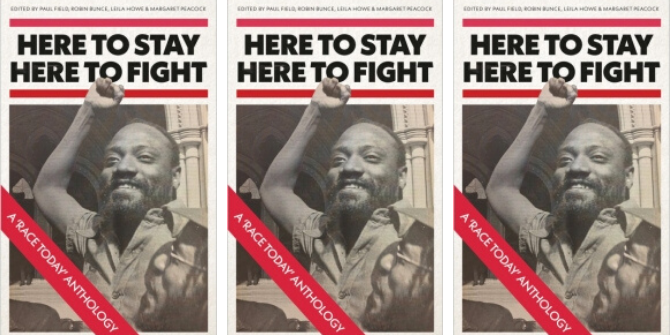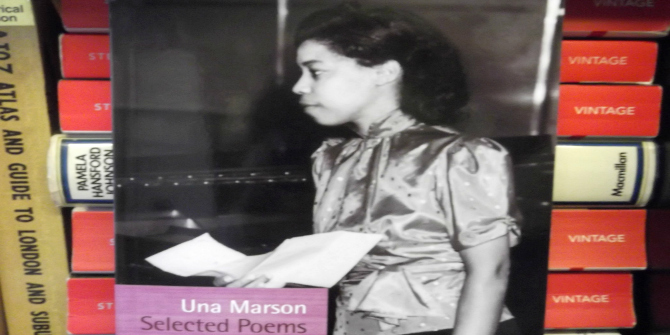In The Confounding Island: Jamaica and the Postcolonial Predicament, distinguished historical sociologist Orlando Patterson addresses the pressing questions of Jamaica’s 58-year postcolonial experience. In this review published on Jamaican Independence Day, Christina Ivey highly recommends the book to anyone looking for a comprehensive overview of modern Jamaica and how its path has been determined by British colonialism, the choices made in post-independence governance and its geographical proximity to the US.
The Confounding Island: Jamaica and the Postcolonial Predicament. Orlando Patterson. Harvard University Press. 2019.
 Jamaica has had an outsized impact on the rest of the world. It exists in fame and infamy, for both its outstanding Olympic history and its record-breaking levels of violent crime, all against the background of consistently feeble economic performance. The country’s hypervisibility and idiosyncratic qualities often lead residents to conclude that Jamaica is ‘not a real place’. It is this sentiment that distinguished historical sociologist Orlando Patterson confronts in his latest work, The Confounding Island: Jamaica and the Postcolonial Predicament.
Jamaica has had an outsized impact on the rest of the world. It exists in fame and infamy, for both its outstanding Olympic history and its record-breaking levels of violent crime, all against the background of consistently feeble economic performance. The country’s hypervisibility and idiosyncratic qualities often lead residents to conclude that Jamaica is ‘not a real place’. It is this sentiment that distinguished historical sociologist Orlando Patterson confronts in his latest work, The Confounding Island: Jamaica and the Postcolonial Predicament.
Across three different sections, Patterson confidently addresses the pressing questions of Jamaica’s 58-year postcolonial experience. The first section, ‘Explaining Postcolonial Failure’, explores common questions concerning the island’s political and economic development. The next – ‘Three Cultural Puzzles’ – examines the country’s cultural institutions, covering everything from Jamaica’s dominance in sprint athletics to race relations in cricket and the export of reggae music. The final section, ‘The Failures of Policy and Politicians’, is by far the most personal. Patterson assesses the failure of a seventies-era urban development project he advised on and his complex relationship with former Prime Minister Michael Manley.
Patterson spends nearly a third of the text tackling why Barbados’s growth has outpaced Jamaica’s. He builds on the work of Daron Acemoglu, Simon Johnson and James A. Robinson (2001), which indicates that countries with better institutions invest more in capital and thus achieve higher incomes. Patterson contributes a significant cultural augmentation to the ‘AJR’ theory through a direct comparison of Jamaica and Barbados. The two countries, which came into independence within years of each other in the 1960s, share almost identical institutional setups – ‘the English language, Westminster parliamentary democracy, constitutional protection of private property, English common law, and the Anglican Church’ (28).
Jamaica has nonetheless trailed Barbados in achieving sustainable development outcomes. Patterson argues that Barbados’s achievement should be accredited to counterhegemonic cultural and institutional appropriation which enabled it to make ‘disciplined policy choices’ (32). He differentiates between the value of declarative and procedural knowledge of institutions:
Declarative knowledge can be learned verbally, whereas procedural knowledge is learned only through observation and practice; it is, for example, the difference between knowing what a bicycle is and does and how to ride one. (25)
He argues that Barbados achieved procedural knowledge of its institutions through appropriation of British colonial culture. British colonial elites regarded their residence in Barbados as permanent and invested more in the island’s political institutions. Conversely, Jamaican colonial elites were ‘loath to lay down institutions, which assume some permanence of residence’ (40).
Jamaica’s large and densely forested mountainous interior served as the site of many slave rebellions and, eventually, populations of free black people. Barbados, by comparison, is a much smaller flat coral island and was thereby much easier to police. After a rebellion of free black people in 1865, the Jamaican House Assembly ‘voted to abolish their assembly and nearly two hundred years of self-rule, calling on the colonial authorities to rule the island directly’ (53). This removed Jamaicans ‘from all the commanding heights of the country’s economy, political life, and administration’ (61). Thus, Jamaica only acquired declarative knowledge of its institutions at the onset of independence, putting it in a much more difficult position to maximise gains from these institutions.
Conversely, the Barbadian Assembly maintained over 300 years of legislative continuity and Barbadians of all races participated in its political system, although not in entirely equal respects (64). Upon independence, they fully embraced their inherited political institutions ‘with the crucial difference that now the electorate was expanded to the entire adult population and its leaders derived from the formerly excluded classes’ (83).
Here, Patterson gives a satisfying answer to a question that has eluded Caribbean developmentalists for years. It is perhaps the most convincing argument set forward in this section of the text. By drawing on the historical determination of Jamaica’s and Barbados’s developmental paths, Patterson shows the mammoth amount of challenges that Jamaica has to overcome before it will be able to occupy a comparable developmental position.

His next chapter, ‘Why is Democratic Jamaica so Violent?’, is less convincing, although it does offer some enlightening facts. Patterson shows violence is inherent to democracy, especially transitional democracies like Jamaica. Still, Jamaica’s problems with violent crime are extraordinary; the country is firmly settled in the top ten most murderous countries per capita and in 2018, it ranked first in the world for homicide of women and girls. Patterson is correct to describe the situation as unenviable.
Patterson argues that the prevalence of violence stems from broken families and troubled relationships between men and women. He cites that 86 per cent of Jamaican children are ‘brought up without the psychological or financial support of the father’ (157), which leads to emotionally and physically overburdened mothers who then enact violence on their offspring. To Patterson, it ‘seems clear’ that the presence of the father reduces violent crime within a community, but I think this conclusion ought to be questioned. Surely the focus should rest on alleviating the burden on women? Feminist scholars such as Ann Shola Orloff (1993) have already argued we should focus on improving women’s access to paid work and their capacity to form and maintain an autonomous household, rather than defaulting to the idea that fathers are a necessary fixture of the home.
Indeed, it is peculiar that after making this argument, Patterson goes on to examine the ‘tension-ridden and abusive relationships between men and women’ (157). He points to the marginalisation of women and the significant proportion of murders that are domestic killings. Sexual assault is the second most common cause of injury to women after fights, and Jamaican authorities are loath to take gender-based violence seriously. So, again, why would the solution be to simply reintroduce men into the family unit when this might only raise the level of violence?
Patterson affirms that Jamaica’s democracy, however violent, is genuine since it ‘passes the ultimate test of true democracies: repeated changes of government between major political parties in unrigged, fair, and transparent elections’ (169). He asserts that Jamaica’s violent transitional democracy is preferable to any authoritarian system, quoting Friedrich Hayek (1960) that ‘the benefits of democracy will only show themselves in the long run’.
Turning to a more pleasing aspect of Jamaican society, Patterson examines why Jamaica has seen such success in sprinting. He notes that ‘Jamaica far outpaces all other nations in number of medals won per Olympiad’, with a performance ‘more than 3.75 times greater than that of the second best performing country’ (214). He competently dismisses the racist notion of a genetic explanation for Jamaica’s track dominance by citing numerous counterfactuals and recent genetic studies. All islands in the Caribbean, and indeed, most of the Americas, underwent the violence of transatlantic slavery, but only Jamaica has performed so outstandingly in track.
Patterson instead offers a compelling argument about the institutionalisation of athletic prowess. Running is a sport with no class barriers and so it was readily taken up by the population. Jamaican National Hero and former Premier, Norman Manley, himself a track superstar, believed sport was integral to development and so it became a key part of the nation’s decolonisation process. The island’s ‘early international success fostered nascent national pride’, which resulted in the ‘island-wide, all-age institutionalisation of track athletics’ (241). This formed a virtuous cycle where ‘the extreme cultural bias toward track athletics generated an optimal selection into running of nearly all available athletic talent’ (241). The success and wealth of local stars only further reinforced the choice of running over all other sports. This dynamic process, rather than genetic arguments, provides a far more satisfactory explanation of Jamaica’s global track excellence.
In the final chapter, ‘Sad about Manley’, Patterson reflects on his relationship with the late Prime Minister Michael Manley. This chapter is by far the most personal. Manley is a contentious figure in Jamaican politics, but Patterson questions who Manley, the person, really was. To the ordinary Jamaican and the world, Manley the politician was ‘the island’s charismatic fourth prime minister […] the most loved and feared, cherished and reviled, cursed and worshipped, forgiven and unforgiven figure in the history of his nation’ (314-15). Patterson reflects on his great difficulty in writing about Manley, despite his multi-decade association with him in a personal and political capacity. He found that he was not alone, and apart from the usual platitudes about Manley loving the Jamaican people, no one really had the capacity to explain who he was as a person.
This chapter reads more like a literary novel than an academic text. It is largely inspired by the memoir of Manley’s daughter, Rachel. Patterson notes that despite his regime’s public promotion of Afro-Jamaican culture, in private Manley’s close friends were ‘almost all from his own light-skinned, privileged caste, an inbred pampered set brought up by retinues of fawning black servants’ (317). Due to the volume of biographies on Manley, Patterson’s contributions hardly excite, but I suppose he wished to express his thoughts once and for all.
For all its flaws, this work is a highly constructive exploration of Jamaica’s postcolonial circumstance. Patterson has a stunning command of facts and figures about seemingly every aspect of Jamaican life. Unlike so much other academic literature on Jamaica, which either romanticises its culture or sensationalises its violence, The Confounding Island deftly explains the island’s many puzzling predicaments. I highly recommend it to anyone who needs a comprehensive overview of modern Jamaica and how its path has been determined by British colonialism, the choices made in post-independence governance and its geographical proximity to the US.
Note: This review gives the views of the author, and not the position of the LSE Review of Books blog, or of the London School of Economics. Thank you to Christina Ivey for providing the images for the review.
Banner Image Credit: Photograph of the book captured against the Kingston landscape. Photograph courtesy of the reviewer, Christina Ivey.
Main Text Image Credit: Mountain view overlooking Kingston and its harbour. Photograph courtesy of the reviewer, Christina Ivey.








2 Comments